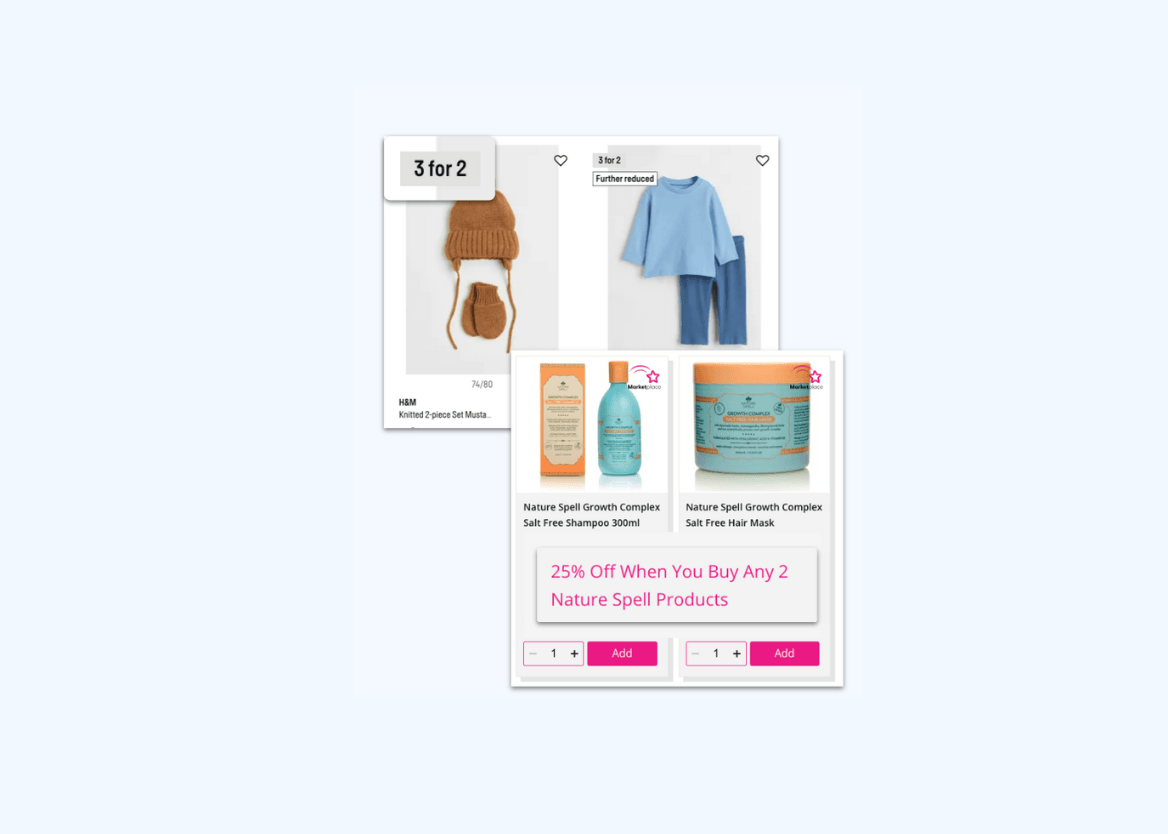What is the Difference Between Dropship and Marketplace?

If you operate an eCommerce business and are looking for strategies to scale your assortment, you might be wondering, “what is the difference between drop ship and marketplace?”
Let’s start with the similarities. In the case of both drop ship and marketplace, a business will sell products online without having to keep them in stock because the product is shipped directly by the supplier on behalf of the merchant. They each help to monetize existing eCommerce traffic and reduce working capital costs.
But while the terms are often used synonymously, there are important distinctions between drop ship and marketplace. At its most basic form, the biggest differences between drop ship and marketplace are the seller of record and who sets the price: In a drop ship model, the merchant is both the seller of record and sets the price, while in the marketplace model the supplier is the seller of record and sets the price.
Read on to learn more about each model, understand the key differences between them, and see how drop ship and marketplace can work together to optimize your assortment and profitability.
What is drop shipping and how does it work?
Drop shipping is an eCommerce fulfillment method in which a business does not stock the products it sells at its warehouse. Instead, when the merchant sells the product, it makes a “just in time” purchase from its supplier, and the supplier ships the product directly to the customer.
With drop ship, the merchant never actually takes physical ownership of the goods, and it doesn’t have to purchase a product until it has already been sold to a customer. However, it is still the seller of record, which means it still controls the retail price and margin, promotions, and customer service. Drop ship offers more control over the portfolio while reducing working capital.
Drop ship is most commonly seen with product categories where the merchant wants to reduce the cost of managing inventory, especially for bulky items like furniture, that don’t fit the business’ existing fulfillment capabilities. It is also applied to those products for which procurement teams can negotiate deeper discounts by committing to a drop ship relationship versus marketplace.
Loading...
Benefits of drop ship
By mitigating inventory risk, optimizing cash flow, and reducing the need to increase warehouse or staffing capacity, businesses who use drop ship benefit from improved profitability compared to the traditional wholesale approach. They also achieve the following benefits:
Brand control: In a drop ship model, the supplier is invisible to the end customer and the merchandising and promotion are fully managed by the merchant.
Price & margin control: With drop ship, the merchant still sets the final sale price and controls margin, which keeps sales accounting aligned with owned inventory.
Returns & customer service: From service calls to managing returns, the merchant remains the first line of support.
What are marketplaces and how do they work?
In an online marketplace, third-party sellers sell directly to end customers via a merchant’s existing eCommerce site. When a sale is made, while the merchant facilitates the exchange, the supplier and buyer enter into an agreement directly.
With a marketplace, the supplier is the seller of record, which means the third-party supplier sets the retail price and provides customer service. The merchant allows trusted third-party partners to sell products directly alongside its own assortment, using its site to connect buyers with sellers. Unlike drop ship, in a marketplace this is all transparent to the buyer.
Marketplaces are generally more scalable than drop ship because the merchant is able to offload much of the onboarding, catalog management, and customer service onto their trusted, pre-vetted network of third-party suppliers. Moreover, due to the increased price transparency afforded by marketplaces and the opportunity for third-party sellers to compete against each other, customers benefit from better pricing and more favorable shipping in addition to a broader assortment.
This model is most commonly used for growing assortment across new, complementary categories, both to test and learn market appeal as well as grow long-tail. However, more and more merchants are also choosing to introduce core categories in their enterprise marketplaces to reduce the risk of lost sales due to out-of-stock products.
Loading...
Benefits of the marketplace model
Organizations launch marketplaces to grow revenue through a wider assortment, improve engagement for buyers and sellers, and increase operational efficiency by delegating more activities to third-party suppliers, resulting in overall better profitability.
Greater speed: Rapidly enter categories with more efficient seller account creation that doesn’t require the same high-touch process as drop ship, faster catalog integration, and seamless inventory updates.
Increased scale: Expand assortment and increase operational capacity by shifting more responsibilities to third-party sellers.
Enhanced agility: Adapt your assortment and pricing to meet the needs of your customers by continuously curating an in-demand selection of offers from trusted, unique and brand-aligned suppliers.
How to combine drop ship and marketplace into a single eCommerce strategy
Now, you may be thinking, “These both sound like good options that address different needs of my business”. And you’d be right. Both drop ship and marketplace are important mechanisms for range extension and assortment expansion. Luckily, with the right technology, you don’t have to choose between the two.
With Mirakl, you can have the best of both worlds with a hybrid model – one that blends marketplace and drop ship.
When you combine marketplace and drop ship operations on a single platform, you can do more business with existing suppliers via drop ship, while expanding into new categories with third-party sellers with a marketplace. The result? More scalable drop ship operations, with less manual effort and more scalable supplier onboarding; plus, the agility and profitability of the marketplace to test and learn across new categories, improve the profitability of long tail, and eliminate out-of-stocks.
Here’s how Aniel, the first B2B automotive marketplace in France, plans to use this hybrid approach to grow its business.
Aniel had already seen tremendous growth after launching its marketplace, adding more than 65 million offers to its marketplace in the first three years post-launch.
But, as the Aniel team looked to expand into a new set of strategic product categories, they experienced two roadblocks. First, Aniel couldn’t attract the specific group of suppliers who sold these products because they preferred operating in a drop ship model. Second, for competitive reasons, Aniel needed to maintain control over pricing across these select categories.
The hybrid marketplace and drop ship platform will be the ideal solution: They’ll maintain the speed, scale, and agility to which they had grown accustomed with their marketplace, while appealing to these suppliers and maintaining the necessary control through drop ship.
So what’s the takeaway? Drop ship and marketplace have plenty in common and both support an inventory-light model, removing barriers to profit and scale. The biggest difference: Drop ship and marketplace simply don’t serve the same fundamental business needs.
Drop ship is ideal for:
Maintaining control over price and margin for existing core categories.
Reducing the cost of managing items in core categories.
Meeting the needs of key suppliers who are unable or unwilling to support direct-to-customer transactions, with improved profitability.
By comparison, the marketplace model is more agile and scalable, ideally suited for businesses that need to:
Respond faster to customer needs.
Test new product categories or drive better prices.
Increase operational efficiency by shifting more responsibility to third-party sellers.
No matter which of these is a strategic imperative for your business, we would love to help you kick-start your journey – with drop ship, marketplace, or both. Get in touch now to take the first step.
Originally published June 13, 2017



